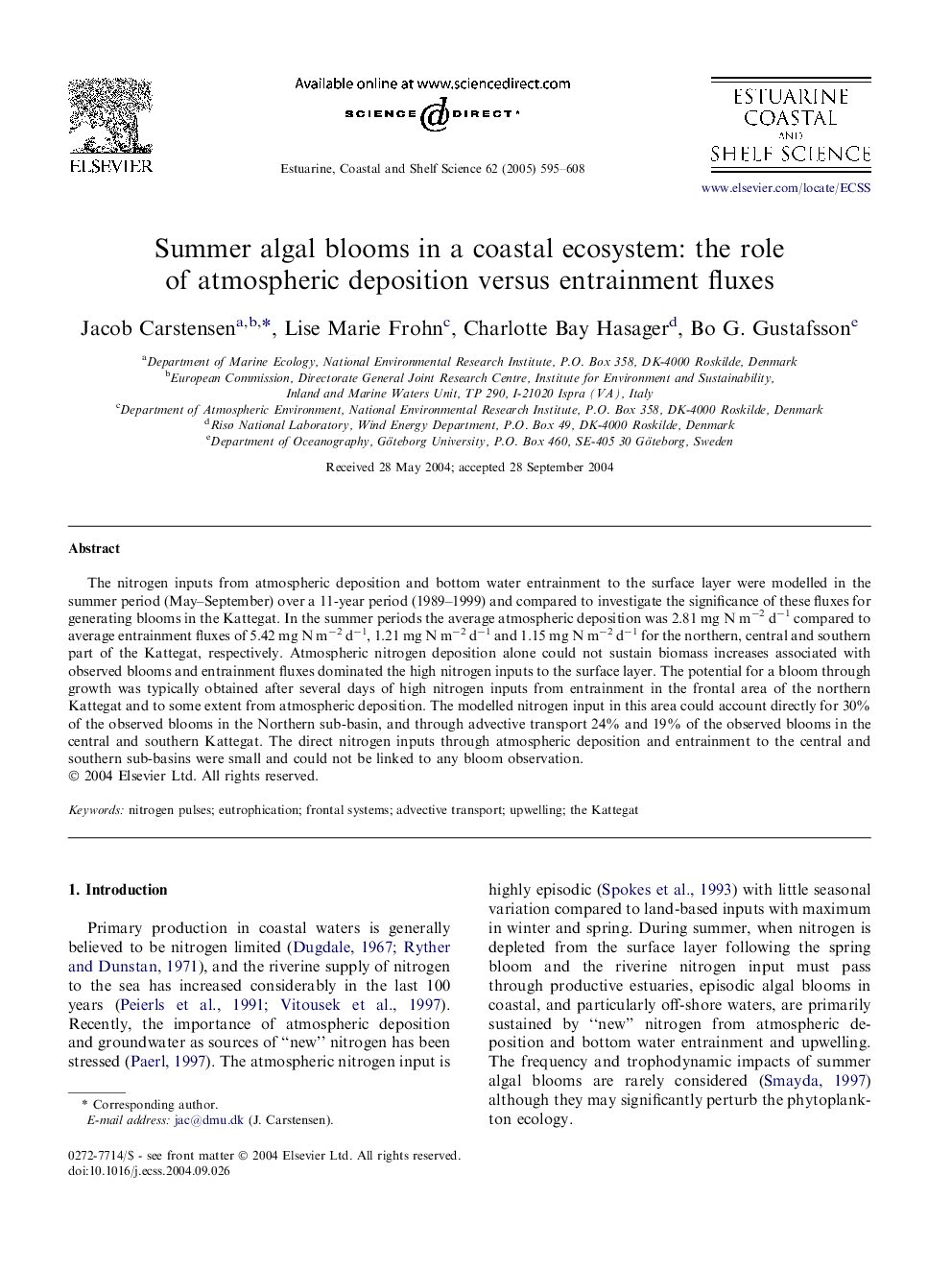| Article ID | Journal | Published Year | Pages | File Type |
|---|---|---|---|---|
| 9480729 | Estuarine, Coastal and Shelf Science | 2005 | 14 Pages |
Abstract
The nitrogen inputs from atmospheric deposition and bottom water entrainment to the surface layer were modelled in the summer period (May-September) over a 11-year period (1989-1999) and compared to investigate the significance of these fluxes for generating blooms in the Kattegat. In the summer periods the average atmospheric deposition was 2.81 mg N mâ2 dâ1 compared to average entrainment fluxes of 5.42 mg N mâ2 dâ1, 1.21 mg N mâ2 dâ1 and 1.15 mg N mâ2 dâ1 for the northern, central and southern part of the Kattegat, respectively. Atmospheric nitrogen deposition alone could not sustain biomass increases associated with observed blooms and entrainment fluxes dominated the high nitrogen inputs to the surface layer. The potential for a bloom through growth was typically obtained after several days of high nitrogen inputs from entrainment in the frontal area of the northern Kattegat and to some extent from atmospheric deposition. The modelled nitrogen input in this area could account directly for 30% of the observed blooms in the Northern sub-basin, and through advective transport 24% and 19% of the observed blooms in the central and southern Kattegat. The direct nitrogen inputs through atmospheric deposition and entrainment to the central and southern sub-basins were small and could not be linked to any bloom observation.
Related Topics
Physical Sciences and Engineering
Earth and Planetary Sciences
Geology
Authors
Jacob Carstensen, Lise Marie Frohn, Charlotte Bay Hasager, Bo G. Gustafsson,
